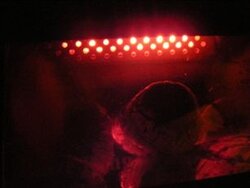We have a Defiant Encore that we bought 20 years ago. We never used it as a primary heat source, and stopped using it completely when we had problems with it backpuffing. We just started using it again this year and intend to use wood heat as well as a newly purchased pellet stove.
Today we had a good bed of coals going and ran it all day with the catalytic converter. Tonight I went over to the stove and could hear a kind of rushing air sound and looked into the stove and it was glowing orange in the back of the stove.
We opened the catalytic converter damper and the griddle temperature eventually heated up to 900 degrees even though we had turned the temperature control to appx. 1/2 open. It is cooling off now.
Although I love wood stove fires, I am really starting to hate this stove - is this something we are doing wrong or is this a problem stove?
Today we had a good bed of coals going and ran it all day with the catalytic converter. Tonight I went over to the stove and could hear a kind of rushing air sound and looked into the stove and it was glowing orange in the back of the stove.
We opened the catalytic converter damper and the griddle temperature eventually heated up to 900 degrees even though we had turned the temperature control to appx. 1/2 open. It is cooling off now.
Although I love wood stove fires, I am really starting to hate this stove - is this something we are doing wrong or is this a problem stove?


